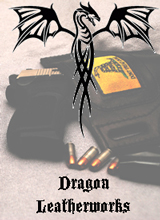This article got me wondering. How does one make a rifled barrel in the simplest way?
Obviously there’s a way, as the Pakistanis are doing it with crude tools:
Just curious, I got the whole bit where a bore can be cut from bar-stock, but how do you make the rifling groves?



foxfire #5
I thought I was the only one who had ever read the Foxfire Books. Happily, I was mistaken.
Clamp the barrel to a bench, use a geared screw to pull a rod through scoring the barrel.
Yeah you can basically use a modified lathe and instead of cutting a “screw” configure for a much slower feed and cut the grooves.
Also common is button rifling, basically a carbide football with essentially rifling cut into it. Pull it through the barrel (hydraulic ram) and it will cut rifling. Repeat a few times as you gradually increase the button (football) size. They button has twist cut into it, so in use its just a pull motion, no twist needed.
Going old school, you could have a master rod of your intended caliber, with twist ‘rifling’ on the outside. Hammer forge the barrel blank around this mandrel.
Never built an AK in afghanistan, but they do build pretty easy in my domestic shop:)
So hammer forging around a mandrel was the original way to make rifled barrels?
rifle & cannon barrels were originally done on a rifling machine (basically a dedicated lathe). Hammer forging came a bit later – but is still SOP for many manufacturers.
cut rifling = rifling machine
hammer forged = on a mandrel
button rifled = pulled carbide cutter
you do see all three in current production guns. beautiful mechanisms, and very slow to evolve and embrace new technology.
They do a pretty detailed job in Pakistan, right down to the Norinco rollmark at 4:30 in the vid ::rolleyes::
I get the feeling that if if wasn’t for that troubling religion thing, we would all get along pretty good with those people.
Wally seems to have covered the basics, so I don’t have much to add. Friend of mine in Oregon has Ackley’s old rifling machines. Cut rifling machines. He just doesn’t have the demand or space to set them up, as he’s mostly into chamber work and tuning and MGM, Kreiger, Pac-Nor, Shilen, Lothar … … … all make good barrels and they’re in the business of making barrels, more than building firearms, so it doesn’t make sense from a business perspective to bother. I buy a lot of barrels from Bergara lately, they’re Spaniards that Shilen and Bellm went over and educated. A bit of tuning and they work fine for most purposes and it doesn’t break the bank.
The problem with both pulled and hammer forged is that, depending on how your tooling is set-up, the button or forging bit 24″ a way from the “feed machinery” is at the end of a steel bar rather far away from where it’s being controlled from, so the torque and twist of rifling can vary, although you can build machinery to compensate for this to a large degree, but it can cause you to get a slight gain twist that isn’t intentional. Variations in the properties of the barrel steel over the length of the bore can also be magnified. If you have something that is designed to displace a certain amount of steel in a certain way as it’s shoved through a tube, the way it does it does vary to some degree with metallurgy along the bore length. Good barrels can be made by all methods, if one is cogniziant of what one is doing…
And they can all be ruined by improperly cut chambers, throats, and crowning 🙂
One other thing, as I just remembered it. I’ve seen some Arabian and African blacksmithed copies of Mausers that were functional, but the blacksmiths didn’t bother rifling the barrel, so, without having seen a Paki Kalashnikov variant, I’m not positive they are all rifled. Smae with some of the Phillipine blacksmithed firearms I’ve actually had in my hand. Many didn’t have any rifling at all. Especially common with pistol forgeries, as the ranges are close anyway, but I’ve seen a number of “Mausers” with no rifling, including one a friend owns that was actually a Damascus twist barrel with no rifling, like older shotguns.
Interesting video.